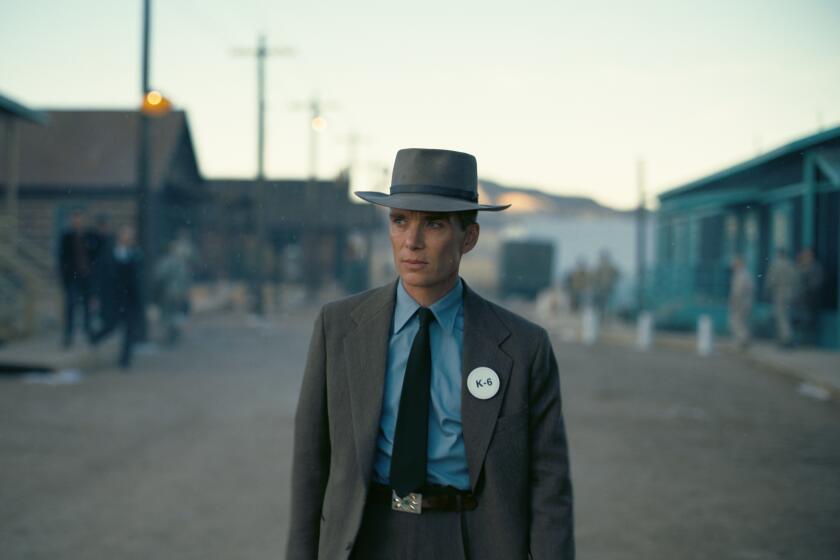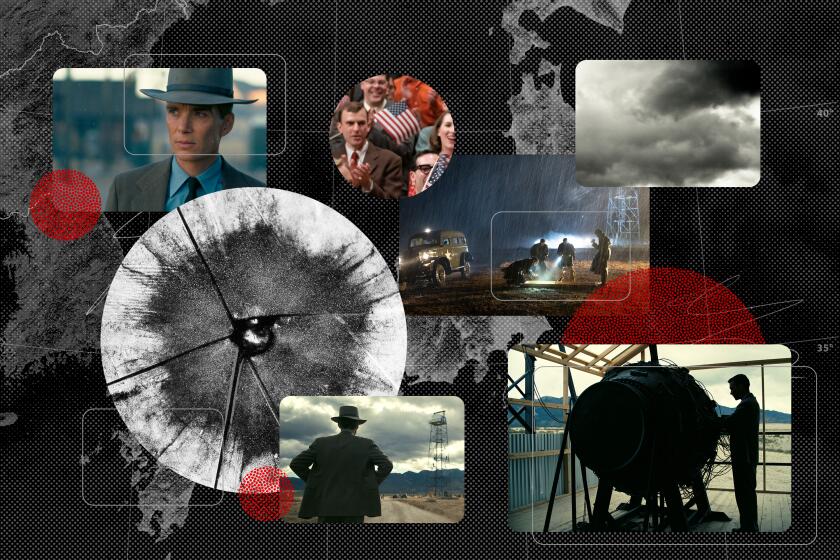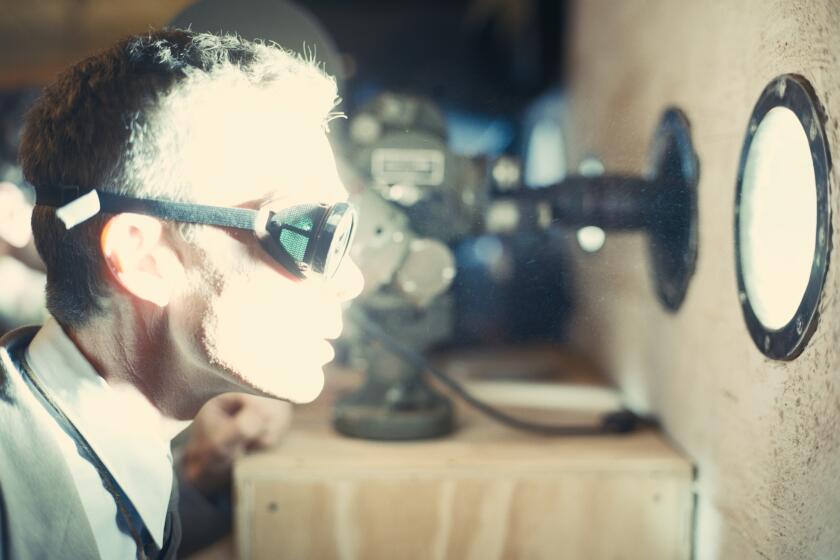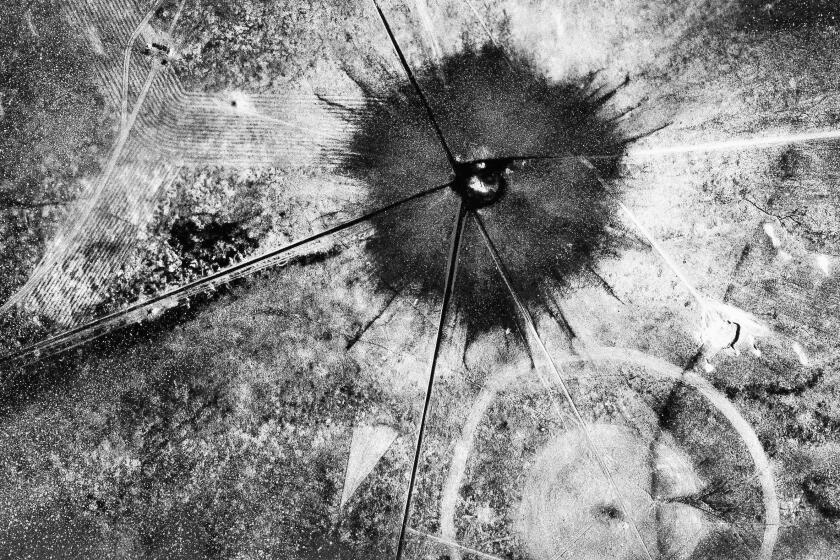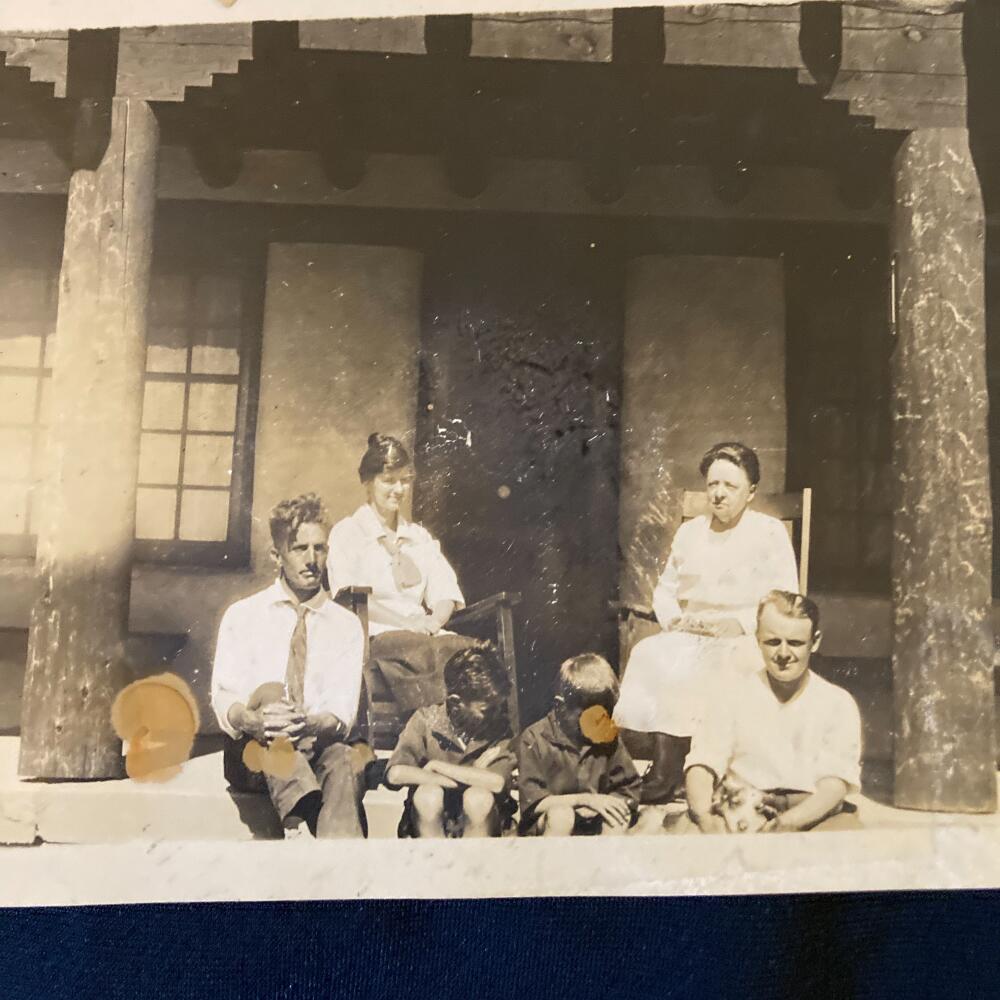
- Share via
Out of the blue in 2011, I received an email from a historian at the Los Alamos Historical Society in New Mexico. She said that because I was a descendant of settlers on the Pajarito Plateau in northern New Mexico in the decades before World War II, I was entitled to receive a history book commissioned by Congress.
It was part of an effort to make amends for the government’s abrupt seizure of the land in 1942 to build the Los Alamos laboratory, where the first atomic bomb was developed.
I was dumbfounded.
Onscreen portrayals of the bomb’s history have been incomplete at best, sanitized at worst. How will Christopher Nolan’s film stack up?
When I was growing up, neither my father nor my grandmother, Constance Smithwick, ever said a word to me about having lived in New Mexico. My mother, who was only briefly married to my father, rarely spoke of him. And both my parents and grandmother died in the late 1970s, so their stories were lost to me. When the Los Alamos historian asked me if I had any photos or stories about my family’s life in the area, I said I had nothing to share.
The book, “Homesteading on the Pajarito Plateau, 1887-1942,” arrived a short time later.
Reading the parts about my family only deepened the mystery of the silence of my father and grandmother about their lives on the plateau. But it clarified historical aspects of their story, including issues of power, race, privilege and loss made newly relevant by the movie “Oppenheimer.”
In the American West, homesteaders on government land, by law, became owners of their land after at least five years of farming, ranching or otherwise improving the acreage. The Pajarito Plateau, a high-altitude volcanic region of mesas and canyons, had a settler community. Hispanic farmers and ranchers, many whose families had lived there for generations, owned most of the few dozen homesteads, which ranged from 10 to 160 acres. The land was semi-arid, water was scarce, and the growing season was short. But by no means was the land vacant when the government chose the area for the Los Alamos facility and evicted the people.
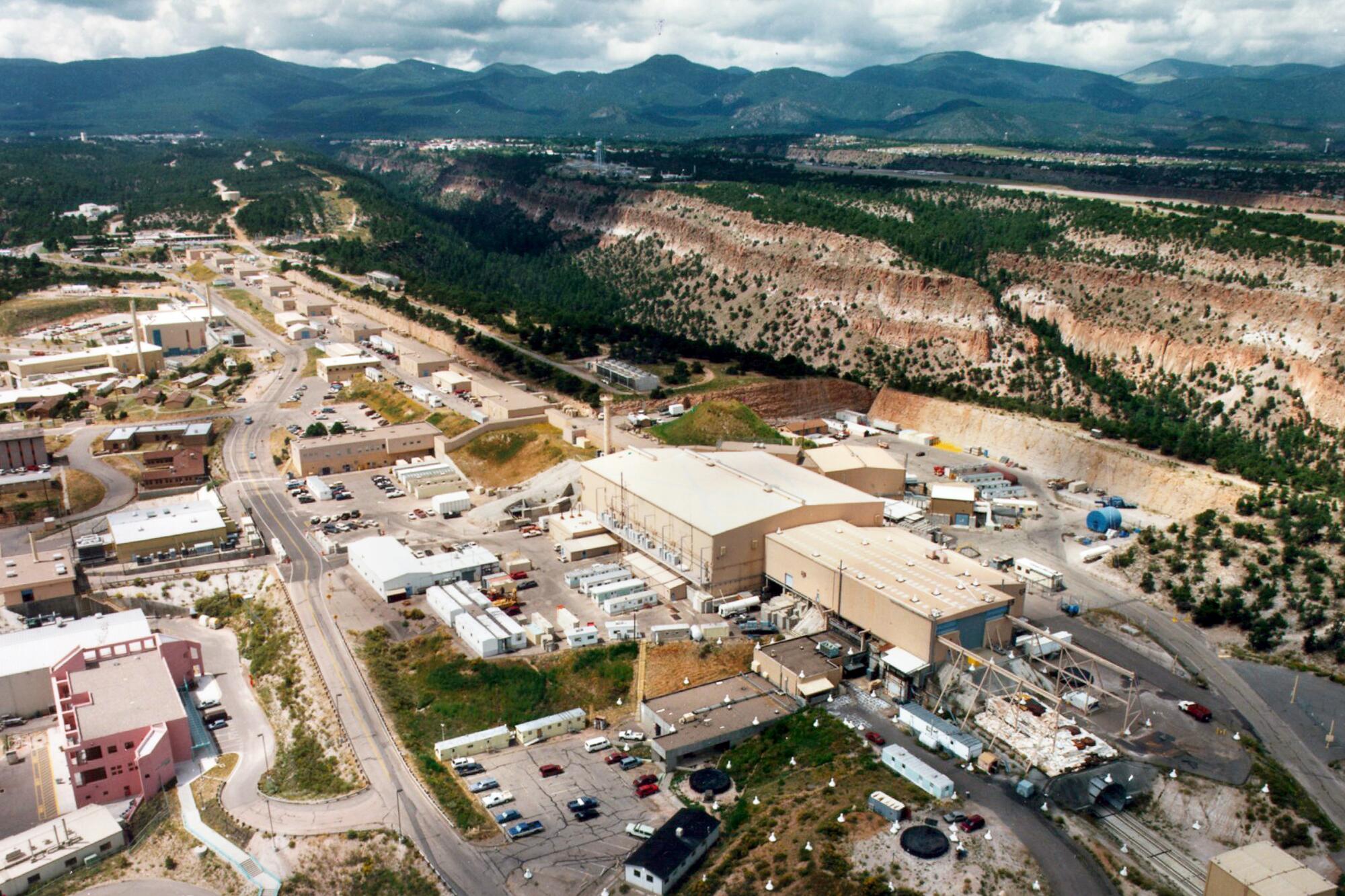
My grandparents, of Irish descent, were part of that community. Starting in 1921, they lived on and managed the plateau’s Anchor Ranch, a 320-acre spread. The ranch was owned by the Ross family of New York. In exchange for providing care at the ranch for a mentally disabled son of that family, my grandparents had run of the place. They are credited with creating a viable enterprise and improving some of the roads that ran through the canyons.
Christopher Nolan’s movie has no interest in reducing the atomic bombings of Japan to a trivializing, exploitative spectacle, despite what some would want.
They left the plateau in 1937 due to my grandfather Francis’ failing health and relocated to Desert Hot Springs in California, another off-the-grid location in those days. Any hope my grandmother may have had to return to Anchor Ranch was dashed in 1942, when the Rosses sold the land to the U.S. government for $43 an acre.
That transaction was later cited in a petition to the U.S. government by the descendants of Hispanic homesteaders who sought reparations because their relatives were paid as little as $7 an acre for their land. In 2004, when Congress established a $10-million fund to repay the descendants, the settlement included a provision to create the book I received.
Although everything the Los Alamos historian wrote in her email was news to me, it jogged my memory.
Christopher Nolan’s ‘Oppenheimer’ hypes the god-like power of nuclear weapons, breeding fatalism and erasing human agency.
When my grandmother died in 1977, I was given a box labeled “Connie’s stuff” by the person who had gathered her belongings. I never looked through it. But during a move in the mid-1990s, the box buckled and a large manila envelope spilled its contents. There were photos of log cabins, children playing with puppies, women on horseback, picnics, sledding. Having never heard my father or grandmother say anything remotely related to these images, I put the photos into a new box and stored it in the garage.
I took another look in 2011, after the email from the Los Alamos historian. I spread my grandmother’s papers on my living room floor, and there, along with the pictures, was a tattered clipping from the Los Alamos Times of an interview with Constance in 1947 entitled “Mesa Old Timer Recalls Pre-Atom Project Period.”
The interviewer asked Constance how she felt visiting the Pajarito Plateau, now unrecognizable and the site of the “unfolding of the most revolutionary development in the history of the world — the atomic power project.”
We’ve been taught that the U.S. had to drop atomic bombs on Japan to end World War II. Historical evidence shows Japan would have surrendered anyway.
“I have no resentment whatsoever that my old world here has been turned upside down by all of this,” she said. When I knew her, my grandmother was anything but accepting.
In the interview, Constance described their happy and harsh life on Anchor Ranch. She referred to her family as pioneers who built cabins, raised horses and cattle, grew alfalfa, hunted, fished, went sledding after brutal snowstorms and attended “gala affairs where women rode to parties on horseback in their elegant finery with their dancing shoes in their saddlebags.” The family had a passion for dogs — Airedales and St. Bernards. In her telling, life was a long, wholesome, outdoor adventure.
All of it only raised more questions for me. If life at Anchor Ranch was so idyllic, why did she never tell me about it? Why did my father maintain a lifelong silence on the topic?
The movie about scientist J. Robert Oppenheimer sheds no light on the health impacts on those downwind from the Manhattan Project’s test site in New Mexico.
In 2021, I was invited by the Los Alamos Historical Society to visit the Pajarito Plateau. The historian showed me the pond on the site of Anchor Ranch where my father would have gone swimming and the foundations of cabins my grandparents built. I was shown records of phone calls (a luxury at the time), shopping lists and accounting records in my grandmother’s loopy handwriting.
I still can’t reconcile the evidence of their lives on the Pajarito Plateau with their later lives. But I did come away with a sense of the inscrutable spirit of the plateau, a mix of beauty and horror. I have also come to understand the power of secrecy.
Secrecy is a theme of “Oppenheimer.” It was the bedrock of the Manhattan Project. It is also the blanket my father and grandmother wrapped around their lives on the Pajarito Plateau, leaving me to piece together their story and mine. I am still at it, trying to fill in the blanks left by their silence about that strange era and place.
Francesca Smithwick-Driver lives in Manhattan Beach. She is writing a memoir, “No One to Ask.”
More to Read
A cure for the common opinion
Get thought-provoking perspectives with our weekly newsletter.
You may occasionally receive promotional content from the Los Angeles Times.
